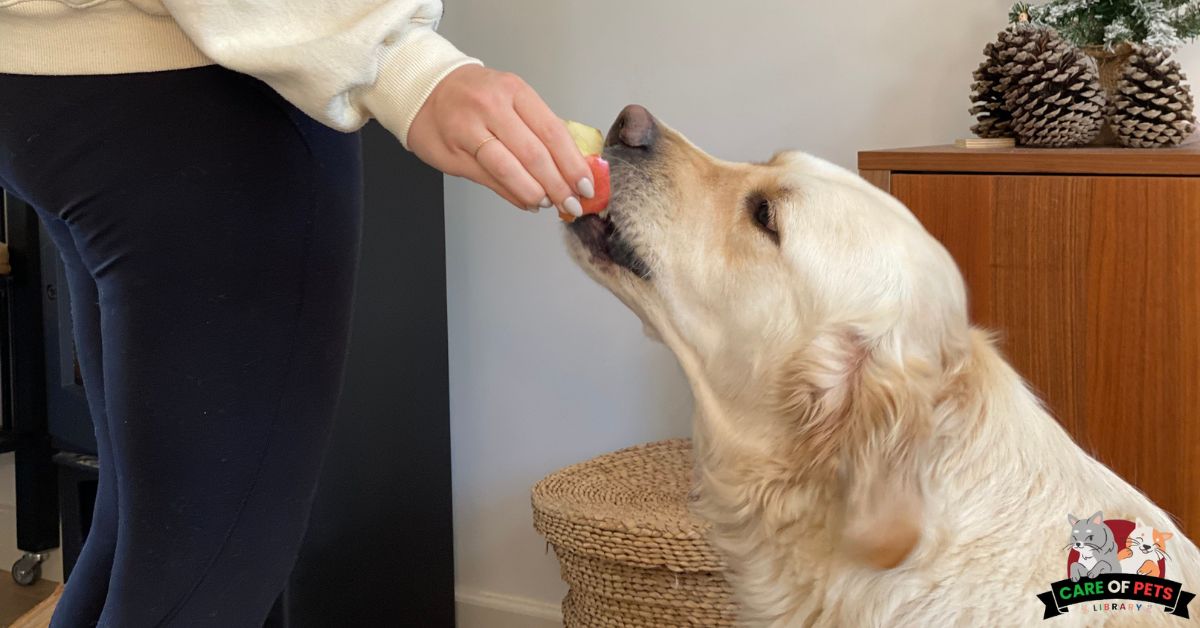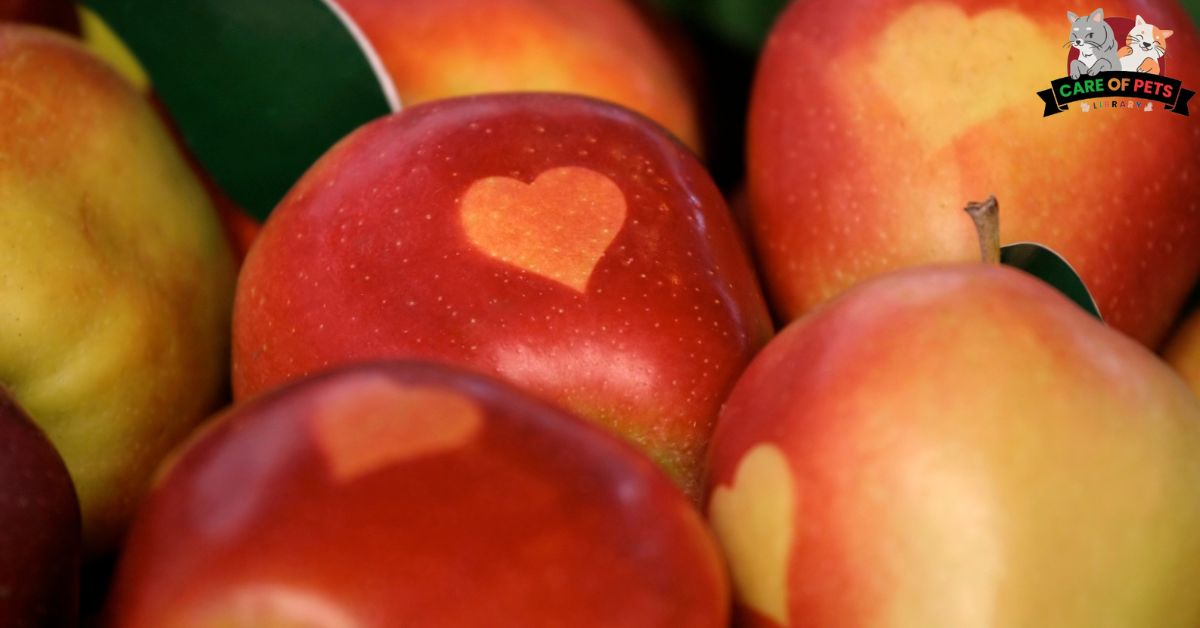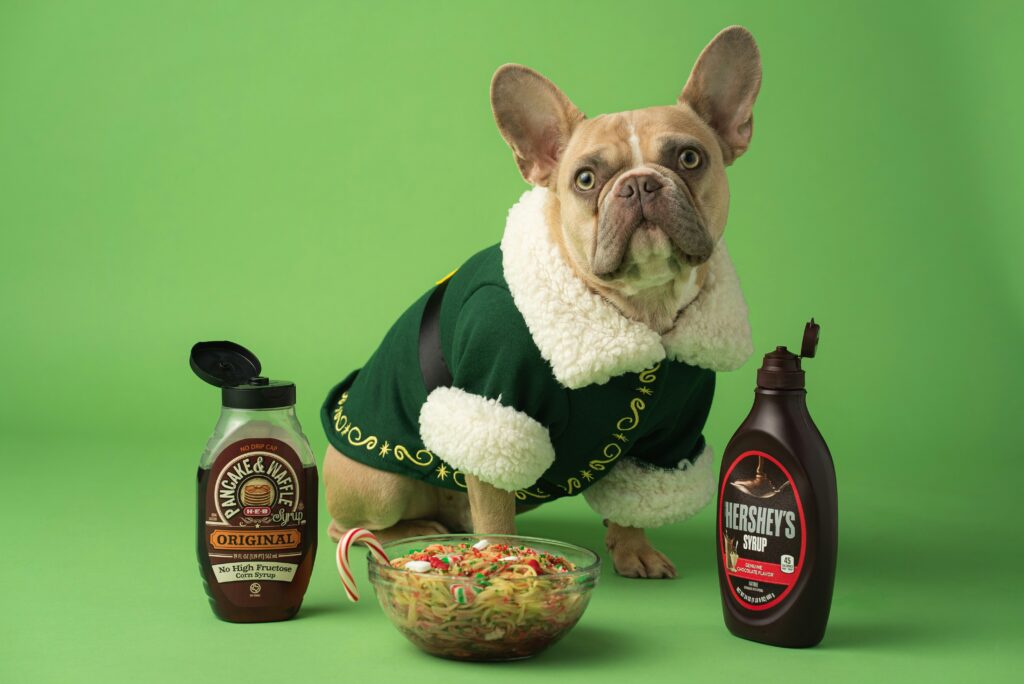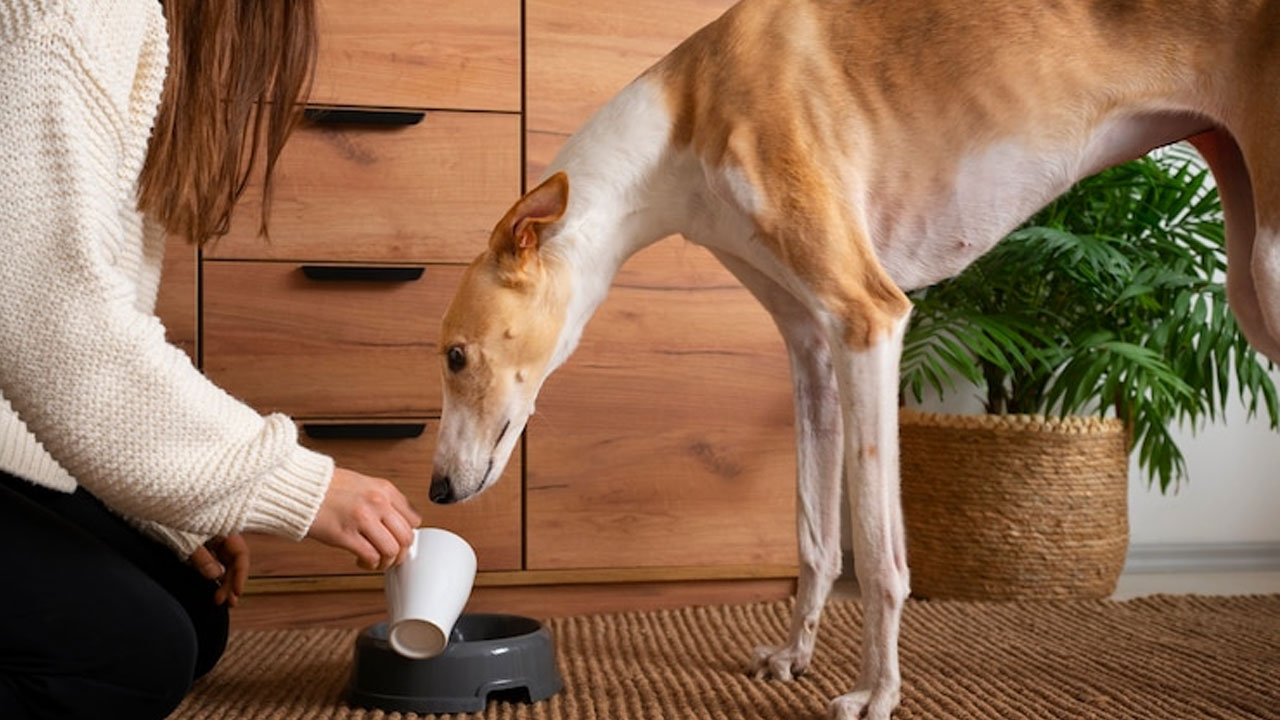
Dogs aren’t simply pets – they are part of our families! As pet owners, we often find ourselves contemplating what foods are safe to share with our furry companions. One such common inquiry is whether dogs can eat apples. In this article, Can Dog Eat Apple? we will explore the nutritional benefits of apples for dogs, potential risks associated with feeding apples to them, precautions to take, and how to introduce apples into their diet safely.
Can Dogs Eat Apples?
Yes, dogs can safely enjoy apples as a healthy treat, but certain precautions should be taken to ensure their well-being. While apples provide a range of health benefits, including being a good source of vitamins and fiber, pet parents should be cautious of potential risks such as upset stomach and cyanide in apple seeds. It’s best to remove the seeds and core before offering apple slices to dogs, and introducing them in moderation.
Opting for unsweetened applesauce or homemade apple treats can be a tasty alternative for dogs. Remember to monitor for any adverse reactions, especially if your furry friend has allergies or digestive issues. By incorporating apples into your dog’s diet as an occasional snack, you can provide them with a nutritious and delicious treat while promoting their overall health and well-being.
Just like any other human food, it’s important to offer apples to dogs in moderation to prevent weight gain and other health conditions. Always consult with your veterinarian if you have any concerns about feeding apples to your canine companion.
Are Apples Good for Dogs?
Absolutely! Apples can indeed be a healthy snack for our furry friends, offering a range of health benefits. They are an excellent source of vitamins, particularly vitamin C, which can support immune function and overall health. Additionally, the fiber content in apples can aid in digestion and promote bowel movements in dogs.
 However, it’s essential to feed apples to dogs in moderation to avoid potential issues like upset stomach or choking hazards from apple seeds or cores. Opting for green apples can be a wise choice, as they typically contain lower sugar content compared to other varieties. Whether served as apple slices or incorporated into homemade treats, apples can provide dogs with a tasty and nutritious snack option.
However, it’s essential to feed apples to dogs in moderation to avoid potential issues like upset stomach or choking hazards from apple seeds or cores. Opting for green apples can be a wise choice, as they typically contain lower sugar content compared to other varieties. Whether served as apple slices or incorporated into homemade treats, apples can provide dogs with a tasty and nutritious snack option.
Just remember to remove seeds and cores and cut apples into bite-sized pieces to prevent choking. As with any new food introduced to a dog’s diet, it’s crucial to monitor for any adverse reactions and consult with a veterinarian if there are concerns about allergies or other health conditions. Overall, apples can be a delightful addition to a balanced diet for dogs, offering both flavor and health benefits.
How Many Apples Can Dogs Eat?
While apples can be a healthy treat for dogs, it’s essential to feed them in moderation. Depending on the size and breed of your furry friend, one or two slices of apple per day is generally safe. However, it’s crucial to monitor for any signs of digestive upset, especially if your dog is not used to consuming apples.
Remember to remove the seeds and core, as they contain trace amounts of cyanide, which can be harmful to dogs if ingested in large quantities. Additionally, some dogs may have allergies or sensitivities to certain fruits, so it’s essential to introduce apples gradually and observe for any adverse reactions.
If you’re unsure about how many apples to give your dog or have concerns about their health conditions, consult with your veterinarian for personalized advice. Ultimately, apples can be a tasty and nutritious addition to your dog’s diet when offered in moderation and as part of a balanced diet.
How to Safely Prepare Apples for Dogs
When offering apples to your furry friend, it’s essential to take a few steps to ensure their safety and enjoyment. Start by selecting fresh apples from a reliable source and wash them thoroughly to remove any dirt or pesticide residue. Next, remove the seeds and core, as they contain trace amounts of cyanide, which can be toxic to dogs if ingested in large quantities. Slice the apple into bite-sized pieces, making it easier for your dog to chew and digest.
Consider removing the skin if your dog has a sensitive stomach or if they prefer softer textures. You can serve the apple slices as they are or incorporate them into homemade treats, such as apple pretzels or frozen applesauce cubes. Remember to introduce apples gradually into your dog’s diet, especially if they are not accustomed to this fruit, and monitor for any signs of adverse reactions.
By following these simple steps, you can safely prepare apples for your canine companion and provide them with a tasty and nutritious snack option.
Can Dog Eat Apple (Can Dogs Eat Applesauce?)
Yes, dogs can enjoy unsweetened applesauce as an occasional treat, but it’s essential to exercise caution and moderation. While applesauce can be a tasty alternative to whole apples, pet parents should be mindful of potential additives or sweeteners that could be harmful to their furry friends.
Opting for unsweetened varieties ensures that your dog receives the health benefits of apples without the added sugar content. However, like any new food introduced to a dog’s diet, it’s crucial to start with small amounts and monitor for any signs of adverse reactions, such as upset stomach or allergic reactions. Additionally, be sure to choose applesauce made from fresh apples rather than those containing artificial flavors or preservatives.
You can serve applesauce to your dog as an occasional treat or incorporate it into homemade frozen treats by pouring it into an ice cube tray and freezing it. By offering applesauce in moderation as part of a balanced diet, you can provide your furry friend with a delicious and nutritious snack option that they’re sure to enjoy.
How Much Apple Can A Dog Eat?
The amount of apple that a dog can safely consume depends on various factors, including their size, breed, and individual tolerance. Generally, it’s recommended to feed apples to dogs in moderation, as part of a balanced diet.
One or two slices of apple per day can be a suitable portion size for most dogs, ensuring they receive the health benefits without overloading on natural sugars or fiber. However, it’s crucial to monitor for any signs of adverse reactions, such as upset stomach or allergic responses.
Remember to remove seeds and cores before offering apples to your furry friend, as these parts contain trace amounts of cyanide, which can be harmful if ingested in large quantities. Additionally, consider the overall calorie intake of your dog, especially if they are prone to weight gain or have specific health conditions.
By offering apples to dogs as an occasional treat and incorporating them into a well-rounded diet, you can provide your canine companion with a tasty and nutritious snack option that supports their overall health and well-being.
Which Foods Can Dogs Eat?
While dogs have specific dietary needs, there are several human foods that can be safe and even beneficial for our furry friends when offered in moderation. Green beans, for example, are a healthy snack option packed with vitamins and fiber, making them an excellent addition to a dog’s diet.
 Leafy greens such as spinach and kale can also provide valuable nutrients and antioxidants to support overall health. Additionally, fresh apples, when prepared correctly and fed in moderation, can be a tasty treat for dogs, offering vitamins, fiber, and hydration. Other safe options include unsweetened applesauce, which can be frozen into ice cube treats, and lean meats such as chicken or turkey, which provide essential protein.
Leafy greens such as spinach and kale can also provide valuable nutrients and antioxidants to support overall health. Additionally, fresh apples, when prepared correctly and fed in moderation, can be a tasty treat for dogs, offering vitamins, fiber, and hydration. Other safe options include unsweetened applesauce, which can be frozen into ice cube treats, and lean meats such as chicken or turkey, which provide essential protein.
However, it’s crucial to avoid feeding dogs foods that are toxic to them, such as chocolate, grapes, onions, and garlic, as these can cause serious health issues including gastrointestinal upset, toxicity, and even organ damage. By offering a variety of safe and nutritious foods in moderation, pet parents can ensure that their canine companions receive a well-rounded diet that supports their overall health and well-being.
How to Feed Apples to Dogs
When introducing apples to your furry friend’s diet, it’s essential to follow a few simple steps to ensure their safety and enjoyment. Start by selecting fresh apples from a trusted source and washing them thoroughly to remove any dirt or pesticide residue. Next, core the apple and remove the seeds, as these contain trace amounts of cyanide, which can be harmful to dogs if ingested in large quantities.
Slice the apple into bite-sized pieces, making it easier for your dog to chew and digest. You can offer the apple slices as they are or incorporate them into homemade treats, such as apple pretzels or frozen applesauce cubes. It’s essential to introduce apples gradually into your dog’s diet, especially if they are not accustomed to this fruit, and monitor for any signs of adverse reactions, such as upset stomach or allergic responses.
By following these simple steps and offering apples to your furry companion in moderation, you can provide them with a tasty and nutritious snack option that supports their overall health and well-being.
Can dogs eat green apples?
Yes, dogs can eat green apples. Green apples, like other varieties of apples, can be a safe and healthy treat for dogs when offered in moderation. They contain vitamins, fiber, and antioxidants that can contribute to your dog’s overall health. However, it’s essential to prepare the green apples properly before feeding them to your furry friend.
Remember to core the apple and remove the seeds, as they contain trace amounts of cyanide, which can be harmful if ingested in large quantities. Additionally, slice the green apple into bite-sized pieces to make it easier for your dog to chew and digest.As with any new food you introduce into their diet, start slowly in order to gauge their reaction and keep an eye out for any signs of digestive upset or allergic reactions.
By offering green apples as an occasional treat and incorporating them into a balanced diet, you can provide your canine companion with a tasty and nutritious snack option.
Conclusion
Dogs can enjoy apples in moderation as part of a balanced diet. While apples offer nutritional benefits, it’s essential to take precautions, such as removing seeds and core, and introducing them gradually. Pay attention to any adverse reactions and consult your veterinarian if you have concerns about feeding apples to your dog.
FAQ
How much apple can I give my dog?
Although your dog may like eating apples, be sure they don’t eat too many. Always offer apples to your dog in moderation; otherwise, they may get diarrhea or stomachaches. Your dog will be happy with only a slice or two of apple. Apples are also edible to puppies.
Can dogs eat apples with skin?
Although the skin is high in fiber and safe to eat, consuming too much of it may cause stomach distress. Before giving your dog apple skin care, be sure to carefully wash it in warm, soapy water to avoid the presence of pesticides. Look for organic apples at the store if you’re seeking for a pesticide-free substitute.
Can dogs eat raw apples?
yes! Apples are rich in fiber and antioxidants in addition to being tasty. As long as the seeds and core are removed—which contain minute quantities of toxins—dogs may eat apples. It’s important to keep in mind that treats should not account for more than 10% of your dog’s daily calorie intake.













